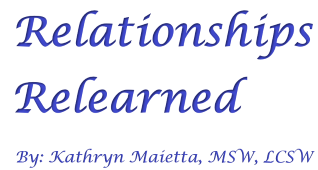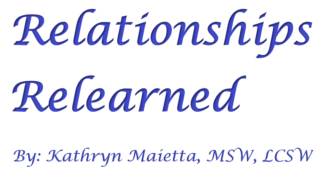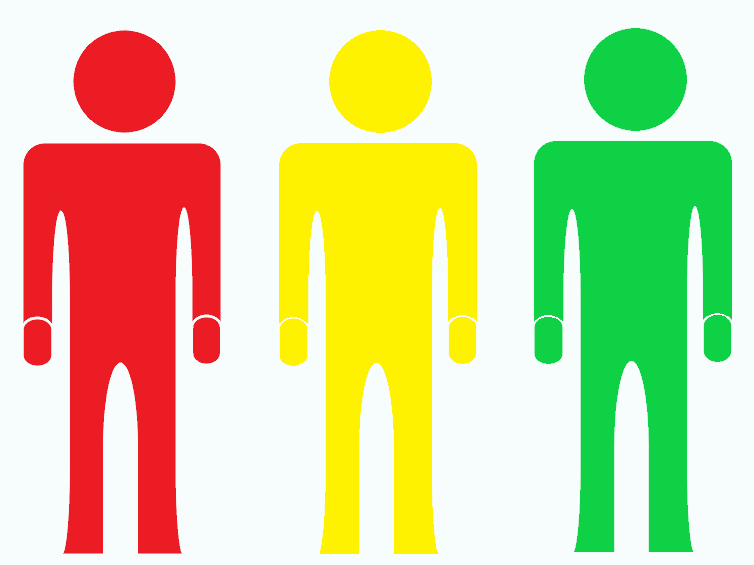The Influence of Red, Yellow and Green (Traffic Light) People
Early in my clinical social work practice I wanted to find a simple way to explain the concept of how we allow others to influence us. It came to me one day as I was sitting at a traffic light. People are like traffic lights: red, yellow and green. Disclaimer: This CONCEPT is not a racial discrimination code for Native Americans (red), Asians (yellow) or aliens (green).
Red, Yellow and Green
The concept of viewing people in terms of being red, yellow and green people has been around for a long time. Most of these concepts have been used with children, as a simple way of visualizing “good” or “bad” touch, “good” or “bad” behavior, or “good” or ”bad” thoughts:
Variation One:
For years, the terms “red” and “green” have been used in teaching children about good touch (green) and bad touch (red). For example, a “green” touch would be when your child’s caregiver helps him to wipe his bottom after using the toilet, and a “red” touch would be the caregiver rubbing your child’s bottom when he is not using the toilet. https://www.stopitnow.org/ohc-content/tip-sheet-how-to-talk-to-your-child-to-reduce-vulnerability-to-sexual-abuse
Variation Two:
For many years, in public schools there was a “Red Light Classroom Management Plan”. Every child begins each day on a green light. Certain behaviors and choices will change their light to yellow or red. Usually, yellow and red lights have consequences attached to them like loss of recess and so forth. No More Green Light, Yellow Light, Red Light Behavior Management Plan!
Variation Three:
The Zones of Regulation is a framework designed to foster self-regulation and emotional control. If people are able to recognize when they are becoming less regulated (“red zone”), they are able to do something about it to manage their feelings and get ourselves to a healthy place, or “green zone”. The Zones of Regulation
Variation Four:
Another theory concerns teaching children how to understand and express their thoughts. “Green Thoughts” are ones you can think or say to anyone. “Yellow Thoughts” are thoughts you can think, but only say to some people. And then there are “Red Thoughts”, things you can think, but shouldn’t say. Teachers Pay Teachers: Red, Yellow, and Green Thoughts
Children are not the only ones to benefit from identifying red, yellow or green people.
Maietta’s Theory of Traffic Light People
Categorizing people as Red, Yellow and Green Traffic Light people is a good beginning to understanding boundaries. See my Blog Learn How to Establish Personal Boundaries. The problem for many people is that they don’t really know how to categorize people. You know the people who are instantly friendly with you and overshare? You probably also know the people who are critical from the moment you start a conversation.
When someone is identified as a Traffic Light Person, it is in relationship to how that person may influence you.
Red Light People: Red Light people are the people to stay away from. These are people to avoid. These are the people who seem to bring out the worst in you. These are also the people who tend to encourage self-criticism and self-doubt.
You cannot always avoid them, but you can recognize them for who they are and their influence. Never be blinded-sided by a comment or the behavior of a Red Traffic Light person. There will always be Red Light people in your life. They could be a brother, an aunt, a co-worker or even your boss.
Yellow Light People: Yellow Light People are most of the people in your life. Yellow People are all around you. They are your acquaintances, the people with whom you have a fleeting or superficial interaction, for example, the people you work with, your neighbors, the people at the dog park, people in the grocery store.
What is interesting is that Yellow Light People can actually be the most emotionally “dangerous” to you. These are the people you tend to let your guard down with, long before you know who they are.
Yellow Light People are people who have not been “tested”. They are people who have not “proven themselves” to you as being reliable. You may understand a Red Light Person is someone to be wary of, someone with whom you need to maintain your boundaries.
The “risk” with Yellow Light People is that at some point you may need to take an emotional risk to see if they should be moved to the Red or Green Light status. Maybe you start by sharing a work-related confidence with a co-worker. You quickly find out the information you shared in “confidence” was shared with others. At that point, you know that the co-worker can be moved to the Red Light status. The alternative is that over time it is possible you find your co-worker to be trustworthy, and move them to the Green Light category.
Green Light People: Green Light people are the people you trust. The people who have demonstrated they have your best interest at heart. They may be people you have known for a long period of time. Or they are people who have proven themselves to be a positive influence over a period of time.
Why Categorize People?
Often I have been asked if identifying people as Traffic Light People is being judgmental. And my answer is always the same: no.
With the concept I am presenting, when you are classifying someone as a Traffic Light Person you are not identifying someone as being a “good person” or a “bad person”. You are:
• clarifying the influence that person has on you
• protecting yourself from emotional harm
• maintaining healthy boundaries
Your relationships with other people are enhanced when you are able to clarify the influence someone has on you.
With warmest regards, 
To be notified of future posts, please enter your email address and click on the Subscribe button.









